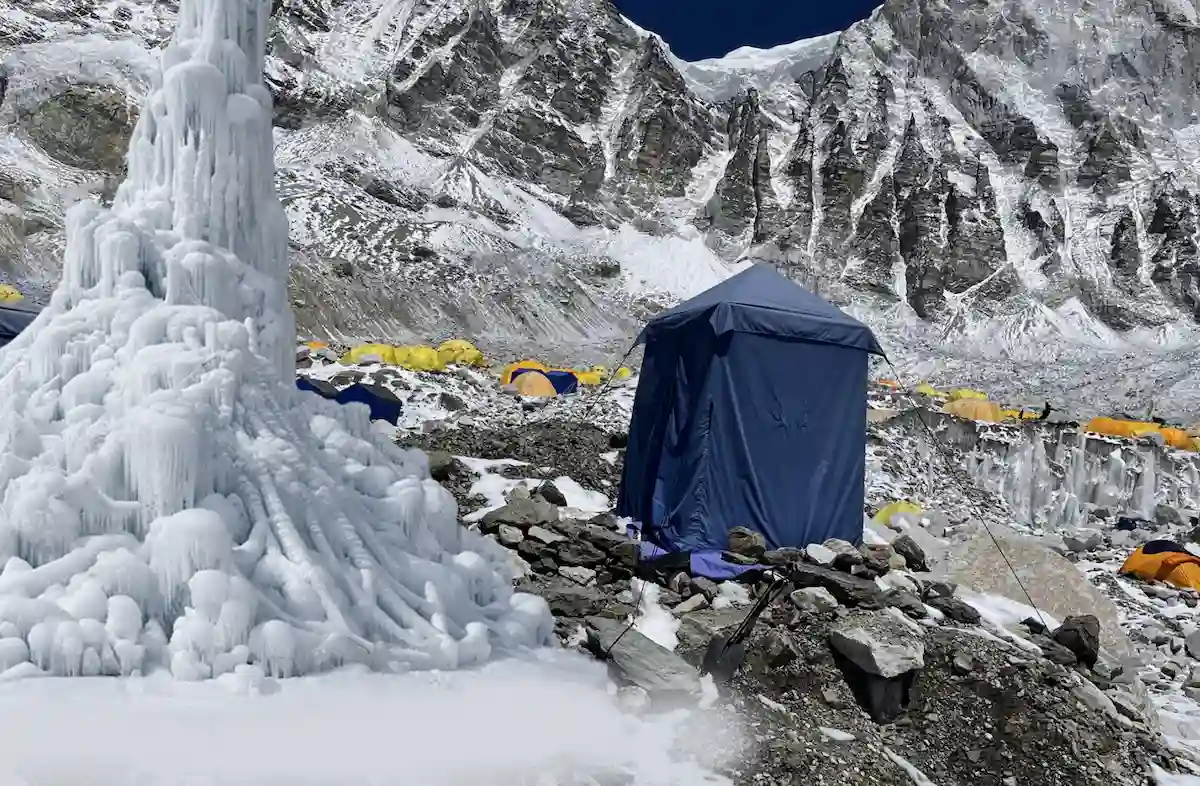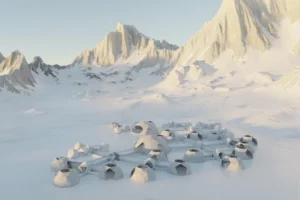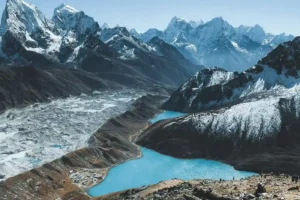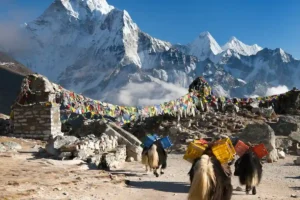
An artificial glacier for supply drinking water in the Everest Base Camp (without touching the Khumbu glacier)
We are working on create an artificial glacier at the Everest Base Camp to provide a reliable source of drinking water for daily needs. The objective? Do not touch the Khumbu glacier.
Every day during the Everest expedition season 12,000 liters of water are consumed at the Base Camp. It is common at Everest Base Camp for many mountaineers and staff to collect natural water from the small river that flows along the Base Camp in spring, towards the nearby villages. It has also been reported that the ice from the Khumbu glacier is broken and used to boil it in the kitchens of the different expeditions.
It is important to remember that Sagarmatha National Park, where Everest and the Khumbu glacier are located, are a protected ecosystem and their conservation is very delicate.
That’s way we are working in the possibility of create an a artificial glacier on Everest Base Camp. Its main function is to eliminate the reliance on unsustainable energy sources like gas and kerosene, which are traditionally used to melt ice for cooking and showers, and also have this water without touching the natural ice of the Khumbu glacier.

A simulation of an artificial glacier in the Everest Base Camp, developed by The NeverRest Project.
The IceSpring provides Everest Base Camp with 175,000 liters of water during the expedition season from a reliable, potable, and sustainable source.
WHAT IS AN ARTIFICIAL GLACIER AND HOW DOES IT WORK?
In 2013, engineer Sonam Wangchuk built the first six-meter prototype of the artificial glacier by freezing 50,000 liters of water. The work was done in Ladakh, in the arid Himalayan highlands, on the Tibetan plateau. Built over the winter, the artificial glacier lasted in the glare of the sun longer than expected, melting five times slower than a frozen pond.
The idea behind artificial glaciers is to freeze and store flowing water wasting away from streams and rivers throughout the winter. The ice on the artificial glacier, by contrast, melts in the spring just when the fields need watering. In the mountains of Ladakh, farmers living at 3,500 meters face serious problems of water scarcity and the secret of life in this high mountain desert has always been the use of Himalayan glaciers.

The Sustainable Everest Base Camp simulation developed by The NeverRest Project, with the artificial glacier on the right.
The current warmer temperatures, however, result in a continuous flow of water from the mountains when it is too cold to grow crops and consequent water shortages during the planting season. Tons of fresh water are lost every year, causing crop losses and the abandonment of agriculture to migrate to the cities.
These ice mountains can be built right next to the village where water is needed. The water is channeled from above with gravity, without the use of electricity or machinery. The only investment is the laying of an underground pipeline from a high point of the stream to the outskirts of the village. Through the use of simple sprinklers, the water that bursts in fine streams turns to ice before it reaches the ground. The frozen water droplets accumulate thanks to the wind until the pyramid is formed. In addition, they can be built to solve different local problems.
PROJECT SPECIFICATIONS
The mechanism involves collecting water from glacier-fed rivers, which is then directed through a pipe. This pipe will release the water vapor from approximately 20 meter elevation. This mechanism takes advantage of cold nights at Everest Base Camp, where temperatures can drop to -30 degrees Celsius.
The water, upon contact with the ground, freezes, contributing to the growth of the artificial geyser until it reaches its intended height approximately of 15 meters. This ice structure will naturally melt in spring, specifically in May, coinciding with the starting of the Everest expedition season. As the ice gradually melts, a steady supply of water will be released to fulfill the water needs.

WATER CONSUMPTIONS AT THE EVEREST BASE CAMP
Liters of water consumed at Base Camp: 3 liters x 1,500 people = 4,500 liters/day.
Liters of water used for cooking:
Breakfast: 450 liters / day
Lunch: 700 liters / day
Dinner: 800 liters / day
Drinking and cooking: 5 liters / day per person.
Five minutes shower: 30 liters/day per person every 2 days.
Liters of water for showering: 7,500 diters/day
Results: Every day, 12,000 liters of water are consumed at the Everest Base Camp.
With a 15 meter tall artificial glacier, we will be able to generate 750,000 liters of water. It requires around two months to defrost, equating to 60 days. With a total of 750,000 liters distributed over these 60 days, the daily thawing rate amounts to 12,500 liters. A quantity of 12,500 liters is defrosted every day.
Source: Kim Assaël, EL GLACIAR ARTIFICIAL ICE STUPA UNA TECNOLOGÍA PARA REVERDECER EL DESIERTO, 2019 / IceStupa.org, ARTIFICIAL GLACIERS OF LADAKH, 3013-2014.



